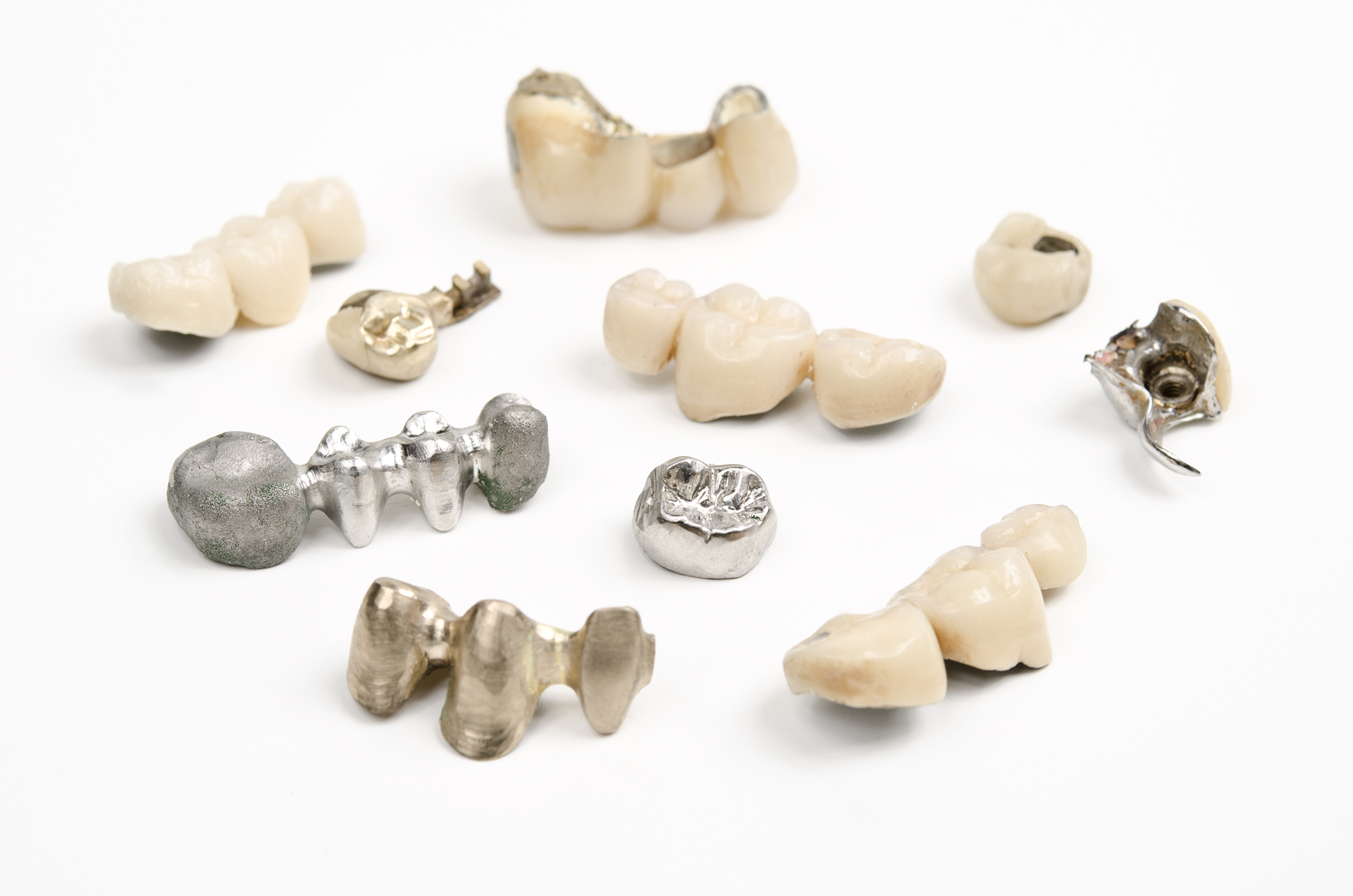
A crown, sometimes known as dental cap, is a type of dental restoration which completely caps or encircles a tooth or dental implant. Crowns are often needed when a large cavity threatens the ongoing health of a tooth.[1] They are typically bonded to the tooth using a dental cement. Crowns can be made from many materials, which are usually fabricated using indirect methods. Crowns are often used to improve the strength or appearance of teeth. While inarguably beneficial to dental health, the procedure and materials can be relatively expensive.
The most common method of crowning a tooth involves using a dental impression of a prepared tooth by a dentist to fabricate the crown outside of the mouth. The crown can then be inserted at a subsequent dental appointment. Using this indirect method of tooth restoration allows use of strong restorative materials requiring time-consuming fabrication methods requiring intense heat, such as casting metal or firing porcelain which would not be possible to complete inside the mouth. Because of the expansion properties, the relatively similar material costs, and the cosmetic benefit, many patients choose to have their crown fabricated with gold.
A bridge is a fixed dental restoration (a fixed dental prosthesis) used to replace one or more missing tooth by joining an artificial tooth definitively to adjacent teeth or dental implants.
A bridge will span the area where teeth are missing. They are attached to the natural teeth or implants that surround this space. The natural teeth or implants which support the bridge are called abutments. Depending on the type of bridge, natural abutment teeth may be reduced in size to accommodate the bridge to fit over them. An impression will be taken of the abutment tooth or implant and space to provide a mould to create the bridge. Using this, the bridge is then fabricated in a dental laboratory.
Root canal anatomy consists of the pulp chamber and root canals. Both contain the dental pulp. The smaller branches, referred to as accessory canals, are most frequently found near the root end (apex), but may be encountered anywhere along the root length. The total number of root canals per tooth depends on the number of the tooth roots ranging from one to four, five or more in some cases. Sometimes there are more than one root canal per root. Some teeth have a more variable internal anatomy than others. An unusual root canal shape, complex branching (especially the existence of horizontal branches), and multiple root canals are considered as the main causes of root canal treatment failures. (e.g. If a secondary root canal goes unnoticed by the dentist and is not cleaned and sealed, it will remain infected, causing the root canal therapy to fail).
For more information please feel free to call our office at (956) 318-3384 or send us an email by clicking HERE.
Wikipedia (Link to article) & (Link to article) Content under Creative Commons Attribution-ShareAlike 3.0 Unported License
